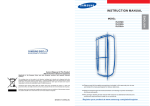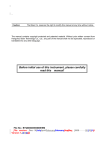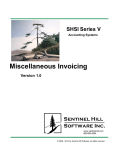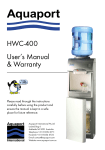Download DLC-100R WATER DISPENSER SERVICE MANUAL
Transcript
S/N : DLC100R001 DLC-100R WATER DISPENSER SERVICE MANUAL Prepared By Water Dispenser Development Dept NOV. , 2004 DIRECTORY 1.Working Principle ..................................................................................................................1 2.Main Technical Parameters ......................................................................................................1 3. Main Components and Their Functions ................................................................................1 4. List of Universal and Wear Parts.............................................................................................2 5.Common Failures and Maintenance Methods..........................................................................2 6. Cautions ................................................................................................................................3 7. Attachment 1 Wiring Principle Diagram.............................................................................4 8. Attachment2 Exploded View ..........................................................................................5 9. Attachment 3 Compressor Working Principle and Failure Analysis……………………...6 I. Working principle The water dispenser is a kind of device, which provides bottled drinking water (distilled water, pure water, mineral water, etc.) or daily life water treated through purification equipment to people for drinking, after being heated, cooled or at its original water temperature. Diversion and shunt functions: through the effect of atmospheric pressure, guide 3 gallons or 5 gallons of commercial water contained in a large bottle, through the bottle supporter, into their tanks respectively, to realize the purpose of auto provision and supplementation of water. Heating function: guide the water into a stainless tank of about 1.5L, heat the water and automatically maintain it at above 90•, by means of a built-in 420W heating tube automatically controlled by a 92• temperature controller, for instant use. Cooling function: through a complete set of “compressor – condenser – evaporator” system, the compressor cool the pure water inside the cool tank by using R134a as the cooling medium. Under the auto control of the temperature controller, keep the temperature of water and refrigerator below 10• for instant use. II. Main Technical Parameters Power Supply 115V~/60Hz Surrounding Temperature 10•-38• Relative humidity •45•-75• Height above sea level Less than 1000m Heating power 420W Ability to prepare hot water 5L/h Cooling power 100W Ability to prepare cold water 1L/h Service conditions In the ambient air, there is no flammable, explosive and corrosive gas and conducting dust, and no strenuous shock. III. Main Components and Their Functions Here we introduce the water dispenser’s major components and their functions. for the drawings, see Attachment 2. Bottle supporter(2): a bottle head is connected to support the drinking water bottle. Cold tank assembly(6): the cold tank is used for preparing and storing cold water and also for shunt; a temperature sensor is fixed in the cold tank to determine water temperature. Hot tank assembly(35): the hot tank contains a heating wire, one end of which connects a dry-boiling prevention temperature controller to avoid dry boiling; a temperature sensor is fixed in the cold tank to determine water temperature. Compressor assembly(36): including PTC starter, condenser, etc., containing R134a cool-producing medium. Tap assembly(46,47): outlet of the water dispenser, made of edible grade plastic. Defrosting pan(37): receiving water overflowing out of the water glass. Separator(4); separate the water from the drinking water bottle. Refrigerator chest(28); supply refrigeratory function. Decorative panel of the door(30): replaceable and easy-cleaning. Decorative panel of front carapace(49); replaceable and easy-cleaning. IV. List of Universal and Wear Parts See the exploded view in Attachment 2. Power switch(5)• 115V~/10A Hot tank assembly(35)• plastic•tumbler switch. 115V~/60Hz/420W•insulation cotton, temperature sensor and self-reset temperature controller are installed in advance. Bottle supporter(2) Tap assembly(46,47)•inner the water dispenser. Connecting tube(14)•silica gel. Block of protect key-press(44)•protect the children. V. Common Failures and Maintenance Methods No. 1 Problems Possible reasons The whole unit fails to Elimination Power is not supplied Inspect power lead and socket. 1. 1. work 2 No water comes out after the bottle is The cold tank or hot tank does not discharge air smoothly; Shake the water dispenser gently; mounted. 2. The tap is broken or tap silica gel 2. Replace the tap. 1. wait for 5 • 10 minute • the falls off. 3 Hot water is not hot 1. 96• bimetallic thermostat acts• 2. Heating wire has poor contact or is damaged. 4 Cold water is not cold Cooling system is damaged or aging. thermostat will self-reset• 2. Inspect or replace the hot tank. Inspect the system or replace its components. See Attachment 3. 5 Water leakage at the The tap is broken Replace the tap. tap. 6 Water leakage inside 1. the machine. The sealing ring of cold tank becomes loose 2. The inside pipeline becomes loose or damaged 1• Open the upper cover and fix the sealing ring 2• Inspect or replace the inside silica gel tube. VI. Cautions 1. Wait for 5-10 minute after the 96• bimetallic thermostat acts. It will self-reset. If multiple false prevention actions happen to the same machine, confirm whether the 96• bimetallic thermostat causes greater errors. It is required to replace the manual reset temperature controller. 2. In case water leakage, failure to reset or component rupture happen to the tap, replace the entire tap, without repairing it. 3. In maintenance or cleaning, be sure not to pull the sealing ring off the cold tank. If it gets loose, repair it in due course. Attachment 1 Water Dispenser Wiring Principle Diagram Attachment 2 Water Dispenser Exploded View Attachment 3 Compressor Working Principle and Failure Analysis Brief outline of compressor cooling working principle The water dispenser compressor cooling system mainly includes compressor, condenser, filter, evaporator, capillary and other components. Drying filter Capillary Condenser Evaporator Compressor The water dispenser adopts a rotary compressor filled with cool-producing medium R134a. R134a gas is, by the compressor, compressed into high-pressure gas, goes into the condenser and then becomes high-pressure liquid. After being filtered by the drying filter, the liquid has its pressure reduced through the capillary, and then enters the evaporator. Because the evaporator has much larger volume than that of the capillary, liquid freon will absorb a great deal of heat from outside to become gas, and finally returns to the compressor, forming the closed circulatory system. Compressor common failures and their maintenance methods Because the compressor and electrical machine are both sealed, there are a suction pipe and a exhaust pipe but no cut-off valve on the body, and capillary throttle is utilized, the compressor may also fail to work or cause the electrical machine to be burned when the electrical machine’s cooling conditions become worse or failures happen in the system. Below are some methods for judgment and maintenance of common compressor failures. I. Methods for Compressor Maintenance 1. The single hermetic compressor has three terminals on the body: R•primary coil or moving coil S•starting coil C•public point 2. Judgment of compressor exhaust pipe oil vent Generally, little oil discharges from a hermetic compressor. If oil is found to drip from the exhaust pipe continuously, it is shown that the compressor is discharging too much oil. Over oil discharge is mainly because that the clearance between cylinder and piston exceeds more than 1.5 times the stipulated maximum fit clearance. In this case, disassemble the compressor, and inspect the fit clearance between cylinder and piston. If it is out-of-tolerance, utilize a new piston. II. Judgment of Compressor Electrical Machine Burning 1. Winding turnoff detect the three- winding by using an ohmmeter or a multimeter. If the resistance between any two windings is infinite, turnoff happens. 2. Winding earthing with a multimeter (at low resistance level), measure between the three terminals from the hermetic compressor and the copper pipes out of the body respectively. If the resistance between any one of the terminals and the ground is zero, the winding is short-circuited. 3. Winding short with an ohmmeter or a multimeter, measure the insulation resistance between any two windings. If the insulation resistance is too low, the windings are short-circuited. III. Compressor Shaft Seizing and Cylinder Blocking Compressor shaft seizing and cylinder blocking mean that broken-in surfaces of moving parts hug each other and can no longer run, which are caused by bad lubricating parts, oil cut-off or blocked oil circuits. Troubleshooting: disassemble the compressor to determine where the failure takes place. In the case of shaft seizing, knock on the seized surface or counterbalance with a wood stick or a copper rod. If it moves slightly, that would be good, and otherwise replace the compressor.










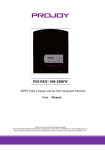
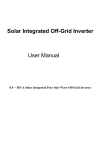
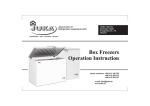
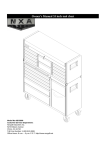
![CK138 Single-door controller user manual [Ver 2.5]](http://vs1.manualzilla.com/store/data/005724760_1-b2fe61d7068f1fe75d1e9cbf42d7289e-150x150.png)

